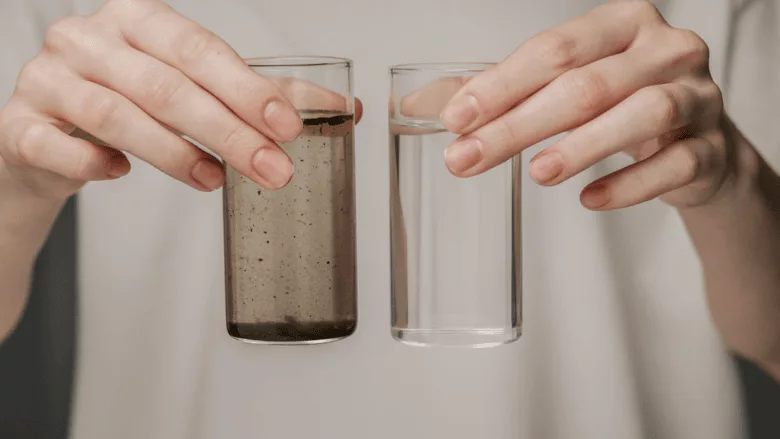‘Tastes Like Water, Because It Is’
How Orange County Is Turning Sewage Into a Lifeline

Image via Vlada Karpovich from Corelens
In Orange County, California, what starts out as sewage ends up—less than an hour later—as crystal-clear drinking water. It’s not a science fiction concept or an emergency measure. It’s a daily reality, and it may well be the future of water management in a drying world.
“This is going to be a blueprint for any community that’s facing water scarcity,” says Denis Bilodeau, president of the Orange County Water District. Standing inside the Groundwater Replenishment System (GWRS), he gestures toward a vat of brown liquid that looks like iced tea. It's treated wastewater from the sanitation facility next door. “Everything’s going to have to be reclaimed and recycled.”
The GWRS is a first-of-its-kind facility in the U.S., capable of transforming up to 130 million gallons of wastewater into potable water every day—enough for about 1 million people. Since opening in 2008, it has processed more than 400 billion gallons of water, tackling not only drought concerns but also dependency on imported sources.
The process is exacting but elegant. Step one: microfiltration. Water is pushed through bundles of polypropylene fibers—“They look like tiny plastic straws,” explains Bilodeau—to remove bacteria, viruses, and any solid debris. Then comes reverse osmosis, where the water is squeezed through a membrane fine enough to block pharmaceuticals and dissolved salts. Finally, it’s hit with ultraviolet light and hydrogen peroxide for a last blast of purification.
“It’s concentrated sunlight,” Bilodeau says. “Like what you would see in a tanning booth—except this would injure your eyes, because it is so strong.”
Once the water is purified, it’s not pumped directly into people’s taps. Instead, most of it travels 15 miles to Anaheim, where it fills recharge lakes and slowly seeps into underground aquifers—ultimately blending with natural sources before being drawn up again for use. Some of it also protects coastal aquifers by pushing back against seawater intrusion.
So what does it taste like?
“Super clean, with almost a flat taste,” says Mehul Patel, executive director of operations at the Water District. “There was a misperception that it tastes different or tastes like something. We’re trying to show people scientifically, water is just water.”
The motto printed on every cup of purified water from the facility? “Tastes like water … because it is water.”
And the science backs that up. In October 2024, California’s State Water Resources Control Board gave the green light to direct potable reuse—meaning this high-purity water can now be sent straight into drinking water systems, rather than being mixed with other sources first. It’s a major regulatory shift that recognizes how advanced water treatment has become.
Still, there’s a cost. The GWRS facility runs on 17 megawatts of electricity and has a $2.5 million monthly power bill. It requires a 26-person team to operate. But Bilodeau says the payoff is worth it: “It’s now cheaper to make our own water than to buy imported water, or to clean sea water.”
Indeed, desalination, long held up as a solution to water shortages, is more expensive. “There are fewer salts in wastewater than seawater,” Bilodeau says, “so the energy cost is about half.”
Los Angeles County is already following suit, with a similar facility under construction in the San Fernando Valley that will process 20 million gallons daily. Projects in Utah, Texas, and Colorado are also gaining traction.
Orange County’s pioneering plant even earned a Guinness World Record in 2018 for the most wastewater purified into drinking water in a single day. But Bilodeau says public buy-in matters more than accolades. “We wanted full transparency, because we’re talking about serving recycled wastewater to people.”
And the people, it turns out, are onboard.
Looking for a reprint of this article?
From high-res PDFs to custom plaques, order your copy today!



.webp?height=200&t=1761182710&width=200)
